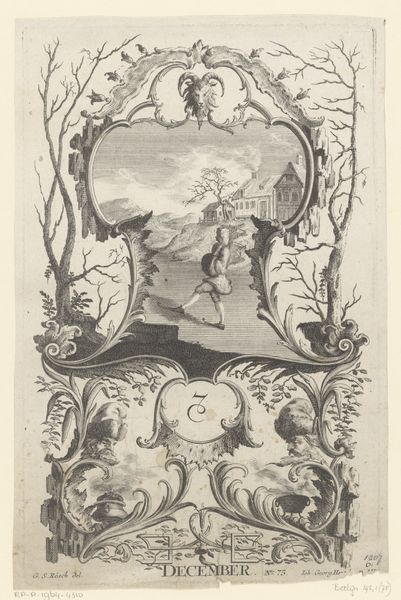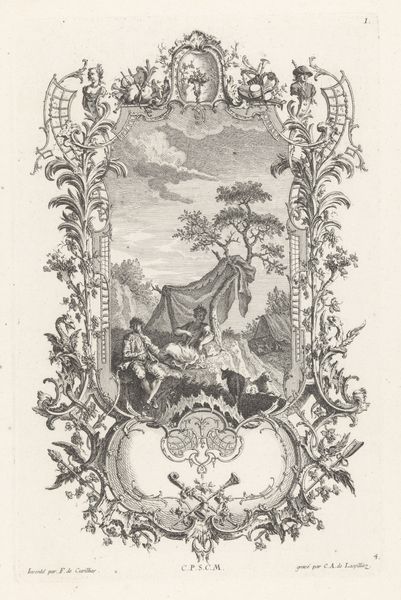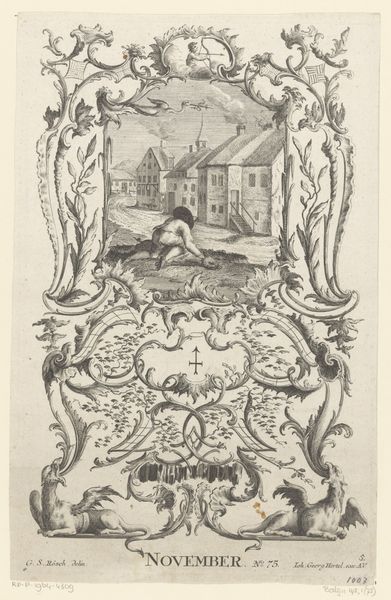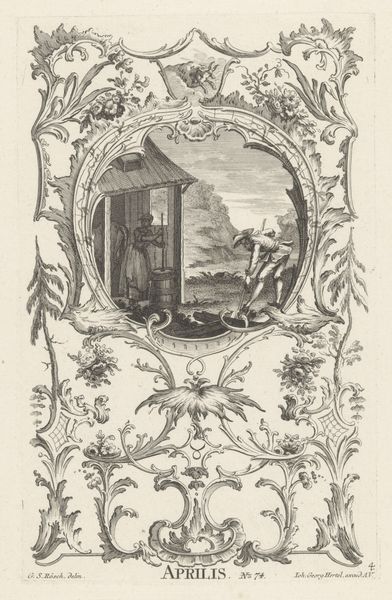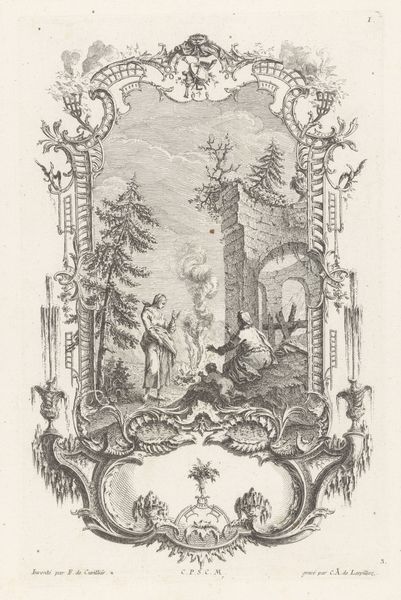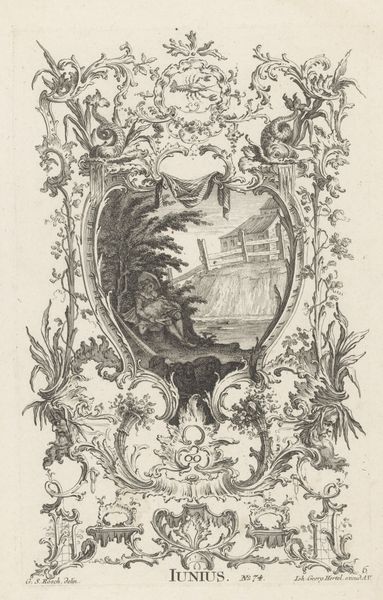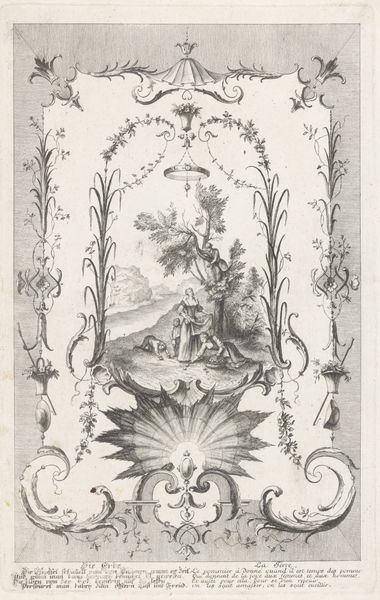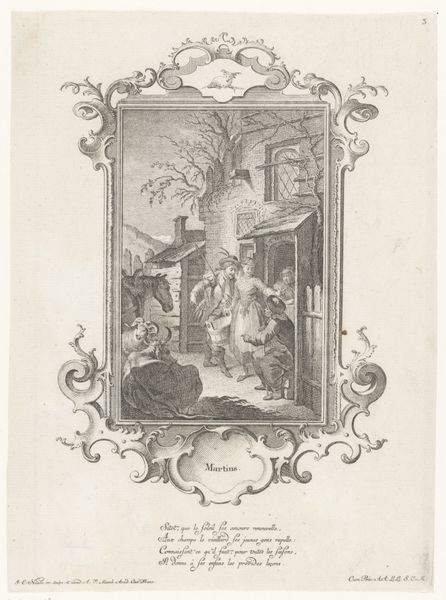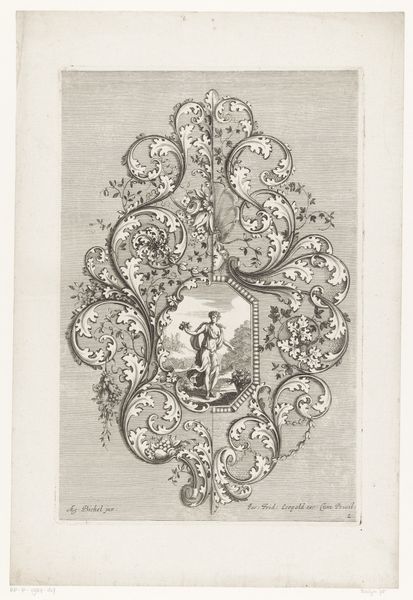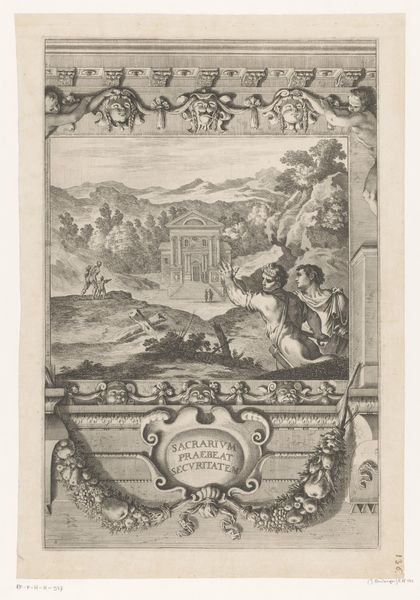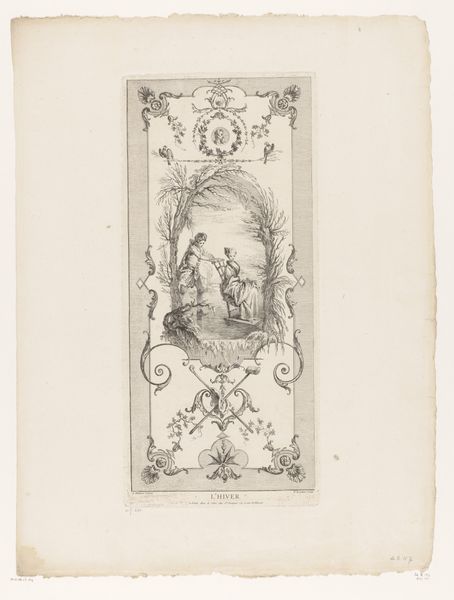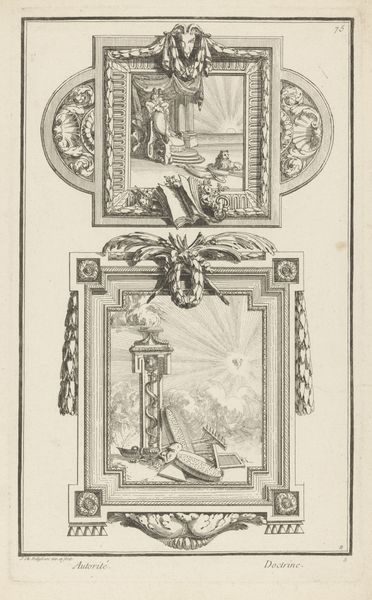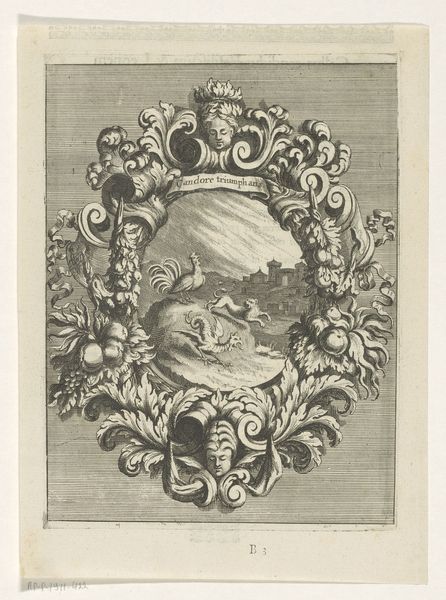
print, engraving
#
baroque
# print
#
old engraving style
#
landscape
#
figuration
#
history-painting
#
engraving
Dimensions: height 294 mm, width 185 mm
Copyright: Rijks Museum: Open Domain
Curator: Ah, yes, this intriguing engraving, titled "Iulius," dating back to somewhere between 1705 and 1766, holds a unique charm. Part of the Rijksmuseum collection, it presents quite a picture. Editor: My goodness, what a fancy frame! I am immediately drawn to its rather intricate details. Almost overdone, yet fascinating. Makes me think of those old formal gardens, so carefully planned, with just a hint of untamed nature peeking through. What story is it trying to tell, though? Curator: Well, the engraving combines a pastoral scene—a farmer at work, a simple farmhouse—with that highly ornamental Baroque framework. It seems the image might be part of a series of depictions, perhaps allegorical or connected to a specific patron's interests in land and production. These scenes of labor were often linked to ideas of order, prosperity and the virtues of rural life. Editor: Yes, I see that now, that interplay. The labor creates some kind of balance within its ornamental container, like containing wilderness and yet almost praising its usefulness. Still, what does 'Iulius' refer to, beyond perhaps someone's name? It feels almost mythological given that proud lion up there at the top. It reminds me how we often put bucolic fantasies around even the hardest work. Curator: The title suggests connections to classical themes. Perhaps to the Roman family name "Julius", famous from figures such as Julius Caesar. In the 18th century, history and genealogy were very closely related and tied to societal structures. So it makes perfect sense this piece blends history with decorative prints that had a social currency of their own. Editor: Fascinating! It's like the artist wanted to both ennoble everyday life through its decorative touches, yet simultaneously root the upper classes into a pastoral, historical past. Curator: Exactly! A print like this reveals a fascinating intersection of class, history, and artistic convention in 18th century Europe. Editor: Yes. I am starting to feel a certain kind of longing looking at it. Maybe I’d rather have my vegetables delivered, but something feels good about connecting work with life, even through art!
Comments
No comments
Be the first to comment and join the conversation on the ultimate creative platform.
